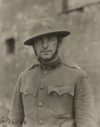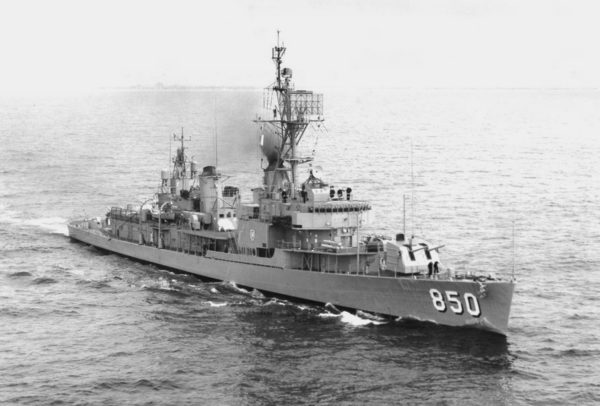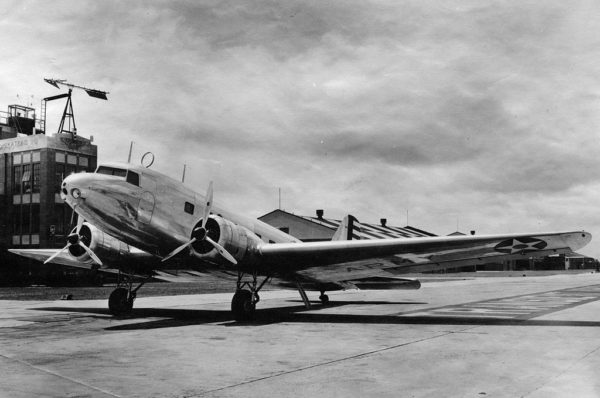World War II Chronicle: February 2, 1941
Click here for TODAY’S NEWSPAPER
The front page reports that Col. William J. Donovan has traveled to the Middle East, meeting with Turkish officials. While the Army, Navy, State Department, FBI, and other agencies have their own intelligence branches, there is no cooperation among them and Pres. Roosevelt will name Donovan the Coordinator of Information (COI) in July, returning him to active duty status (Donovan had held a reserve commission since 1919).

In June 1942, the COI splits into the Office of Strategic Services (predecessor of today’s CIA) and the Office of War Information (which became the now-defunct U.S. Information Agency). Donovan pins on brigadier general stars in 1943 and is promoted to major general in 1944.
Mosquito Fleet
The “gravure” section of the paper (beginning on page 102) features a photograph of PT boats traveling down the Potomac River, beginning their 2,000-mile journey to Key West Florida.
The two vessels whose hull numbers are visible are PT-11 and PT-12. Adm. Samuel Eliot Morrison’s History of United States Naval Operations in World War II lists October 1940 as their launch date. These 70-foot vessels, manufactured by the Electric Launch Company (Elco) were laid down in April 1940 and launched from their Bayonne, N.J. yard six months later. Sea trials found boats of the PT-9-class too small to handle the open ocean and too short to carry American torpedoes (they were based off of British motor torpedo boats which used 457-mm torpedoes, compared to our 533-mm Mark 14s). Designers would lengthen the frame by seven feet, and these were among the 17 early American PT boats transferred to the Royal Navy in 1941.
For those interested in tracking down their fate, PT-11 and PT-12 were transferred in April, renamed MTB-260 and MTB-261 respectively. Elco’s Naval Division would manufacture 399 torpedo boats during World War II, including the famous PT-109, skippered by future president John F. Kennedy. Currently, he is taking post-graduate business classes at Stanford. Back problems kept him from getting a slot in the Army’s Officer Candidate School in 1940, but Kennedy does secure a commission in the Naval Reserve this October.

Older brother Joe Jr. drops out of his final year of law school at Harvard to enlist in the Naval Reserve in June (he becomes a Naval aviator). Younger brother Robert also enlists in the Naval Reserve, serving as a seaman apprentice on the shakedown cruise of the destroyer named in honor of his brother, the Gearing-class destroyer USS Joseph P. Kennedy Jr.
‘Chute Battalion

On Aug. 16, 1940, 1st Lt. William T. Ryder and 10 members of the Parachute Test Platoon jumped out of a Douglas C-33 over Fort Lawson Army Airfield, Ga., giving birth to the American parachute infantry. The the test platoon grew into the 501st Parachute Battalion, created on Sept. 16, 1940 and activated Oct. 1 at Fort Benning, Ga. In 1942, the 501st Parachute Battalion became the 501st Parachute Infantry Regiment, assigned to the 101st Airborne Division and activated at the newly constructed Camp Toccoa in northeastern Georgia. The division’s commanding officer, Maj. Gen. William C. Lee (the “Father of the U.S. Army Airborne”) read the following to his men (emphasis mine):
“The 101st Airborne Division, which was activated on 16 August 1942, at Camp Claiborne, La. has no history, but it has a rendezvous with destiny.
“Due to the nature of our armament, and the tactics in which we shall perfect ourselves, we shall be called upon to carry out operations of far-reaching military importance and we shall habitually go into action when the need is immediate and extreme. Let me call your attention to the fact that our badge is the great American eagle. This is a fitting emblem for a division that will crush its enemies by falling upon them like a thunderbolt from the skies.
“The history we shall make, the record of high achievement we hope to write in the annals of the American Army and the American people, depends wholly and completely on the men of this division. Each individual, each officer and each enlisted man, must therefore regard himself as a necessary part of a complex and powerful instrument for the overcoming of the enemies of the nation. Each, in his own job, must realize that he is not only a means, but an indispensable means for obtaining the goal of victory. It is, therefore, not too much to say that the future itself, in whose molding we expect to have our share, is in the hands of the soldiers of the 101st Airborne Division.”
A funny story about Camp Toccoa: it was originally named Camp Toombs, after Confederate general Robert A. Toombs. Col. Robert F. Sink, formerly of the 501st and now commanding the 506th Parachute Infantry Regiment, thought it might spook superstitious soldiers who passed the Toccoa Casket Company — while traveling down Route 13 — on their way to Camp “Tombs,” so he convinced the Department of the Army to rename the base. And on the subject of Sink (yes, the battalion commander from the Band of Brothers book and series): he turned down promotions twice to remain with the 506th, which he led through the entire war.
Evening star. (Washington, D.C.), 2 February 1941. Chronicling America: Historic American Newspapers. Lib. of Congress.
https://chroniclingamerica.loc.gov/lccn/sn83045462/1941-02-02/ed-1/
